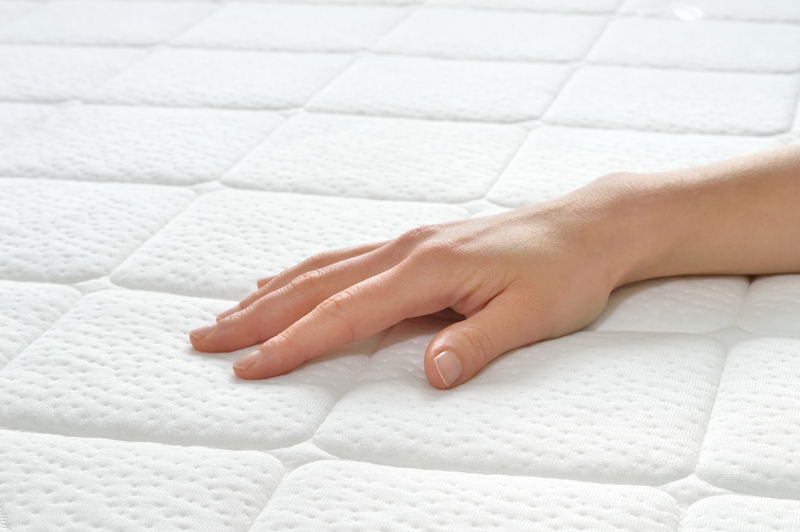Revitalize Your Space by Cleaning Mould from Window Sills
Posted on 05/09/2025
Revitalize Your Space by Cleaning Mould from Window Sills
Mould on window sills is more than simply an eyesore. It can pose real health risks and diminish the beauty and comfort of your living environment. Tackling this issue not only maintains your home's aesthetic appeal but also safeguards your family's wellness. In this comprehensive guide, you'll learn everything you need to know about removing mould from window sills, why it's vital, and how to keep your space bright, fresh, and healthy.
Why Addressing Mould on Window Sills is Essential
If you've ever spotted black, green, or brown patches on your window sills, you're likely dealing with mould. Let's see why it's critical to deal with this issue promptly:
- Health Hazards: Mould spores can trigger allergies, worsen asthma, and cause respiratory issues, especially in children and the elderly.
- Property Damage: Over time, neglecting mould can deteriorate window frames and sills, leading to costly repairs or replacements.
- Unpleasant Odours: Mould releases a musty, persistent smell that can infiltrate the entire home.
- Aesthetic Impact: Mould stains can permanently scar your sills, making even the cleanest house appear unkempt.
Clearly, cleaning mould from window frames is not something you want to delay! Let's move on to identifying what you're dealing with.

Recognizing Mould vs. Mildew on Window Sills
Understanding the Difference
You might hear people use the terms mould and mildew interchangeably. While both are types of fungi, they differ slightly:
- Mildew: Typically appears as a powdery, white, or greyish film on surfaces, and is easier to clean.
- Mould: Appears black, green, or brown, and penetrates deeper into the surface, making it tougher to remove.
For our purposes, all discoloration and growths on window sills should be treated with caution and removed promptly.
What Causes Mould to Grow on Window Sills?
Before we delve into how to clean window sill mould, it's helpful to know why it appears. Understanding the causes can help you take preventative actions.
- Moisture: The primary culprit is excess moisture. Windows are prone to condensation, especially in colder climates or when there's a significant difference between indoor and outdoor temperatures.
- Poor Ventilation: Infrequently opened windows and a lack of airflow encourage mould growth.
- Leaks: Rainwater seepage or plumbing leaks can also provide the perfect breeding ground for mould.
- Dirt and Organic Residues: Dust and debris on window sills nourish mould spores, helping them to thrive.
Step-by-Step Guide: Cleaning Mould from Window Sills
Ready to refresh your space? Here's a detailed guide for revitalizing your window sills by removing mould.
1. Gather Your Supplies
- Protective gloves and goggles
- N95 or similar mask (to avoid inhaling spores)
- Bucket of warm water
- Mild detergent or dish soap
- White vinegar or baking soda (optional natural cleaners)
- Commercial mould remover (for severe cases)
- Scrubbing brush or old toothbrush
- Soft clothes or paper towels
- Spray bottle
2. Preparation and Safety
- Open windows: Ensure good ventilation while you clean mould to disperse spores and reduce inhalation risks.
- Don safety gear: Gloves, goggles, and a mask are essential as exposure to mould can cause irritation.
- Remove curtains or blinds: Launder them if they show any mould signs.
3. Initial Cleaning
Begin by wiping away any loose dust, dirt, or debris from the window sill using a slightly damp cloth. This prevents you from spreading spores while scrubbing.
4. Apply Cleaning Solution
- Mild cases: Mix a few drops of dish soap in warm water. Dip your brush, scrub the affected area thoroughly.
- Stubborn mould: Use white vinegar--spray directly onto the mouldy spots, let it sit for 10 minutes, then scrub.
- Persistent growth: Sprinkle baking soda over the area and spray with vinegar. The fizzing helps lift the mould. Scrub and wipe clean.
- Heavy infestations: Opt for a commercial mould remover, following the manufacturer's instructions.
5. Rinse and Dry
Use a clean damp cloth to remove any residue. Immediately dry the area with paper towels or a lint-free cloth to prevent future mould growth.
6. Repeat if Needed
If any stains or patches remain, repeat the process. Some mould on window sills can be deeply embedded, especially on wood.
Natural Alternatives for Cleaning Mould on Window Sills
For those who prefer eco-friendly options or have sensitivities to harsh chemicals, consider the following:
- Vinegar: Its acidity kills up to 82% of mould species. Spray, wait, and wipe away.
- Baking Soda: Natural, safe, and excellent for scrubbing. Combine with a little water to create a paste.
- Tea Tree Oil: Combine a teaspoon of oil with a cup of water in a spray bottle for an effective mould remover with a pleasant scent.
*Note: Never mix vinegar with bleach, as this releases dangerous chlorine gas.*
Preventing Mould from Returning to Your Window Sills
Essential Prevention Tips
Cleaning isn't enough if mould quickly returns. Take these proactive steps to keep your window sills mould-free:
- Regular Cleaning: Wipe down window sills weekly to remove dust and moisture.
- Enhance Ventilation: Open windows regularly, especially after showers or cooking. Use extractor fans where possible.
- Control Humidity: Aim for indoor humidity below 60%. Use a dehumidifier or air conditioner as needed.
- Seal Leaks: Check for cracked seals around windows and repair promptly to prevent water ingress.
- Use Mould-resistant Paint: In persistent cases, apply a mould-inhibiting primer and paint to your window sills.
- Remove Plants: Minimize indoor plants on sills, as damp soil can increase humidity locally.
Best Practices for Different Window Sill Materials
Wooden Window Sills
- Be gentle to avoid damaging the finish.
- After cleaning, if the surface feels rough or water-damaged, lightly sand and refinish.
- Use furniture wax or sealant for extra protection.
UPVC or Vinyl Window Sills
- These are less porous, so mould is easier to remove.
- A simple vinegar and water solution suffices for regular cleaning.
- Avoid abrasive clips that may scratch the surface.
Stone or Tile Window Sills
- These rarely host mould deep inside but clean the grout and edges thoroughly.
- Use stone-safe cleaners to avoid surface etching.
Is It Time to Replace Severely Damaged Window Sills?
In some rare cases, window sills may be so badly affected by mould and damp that swapping them out is the safest and most efficient option. Signs might include crumbling wood, significant warping, or persistent musty odours even after multiple cleanings.
- Consult a Professional: If you're unsure about the extent of damage, an expert can advise on repairs versus replacement.
- Prevent Recurrence: Address underlying issues like leaks and poor insulation before installing new sills.

FAQ: Cleaning and Preventing Mould on Window Sills
How often should I clean my window sills?
Wipe them down weekly and perform a deep clean at least seasonally, especially if you notice condensation.
Is mould on window sills dangerous?
Yes, especially for vulnerable individuals. It can trigger allergies, asthma, and other respiratory problems.
Can I use bleach to clean mould?
Yes, but vinegar and baking soda are usually safer for painted or wooden surfaces. If using bleach, dilute it 1:10 with water and rinse thoroughly.
Why does mould keep coming back after cleaning?
This usually indicates persistent moisture or ventilation issues. Be diligent with prevention tips outlined above.
Conclusion: Transform Your Space by Banish Mould from Window Sills
Revitalizing your living area starts with clean, fresh window sills. Tackling mould restores brightness, removes unhealthy spores, protects your property, and enhances your home's comfort and appeal. By following the steps and tips outlined here, you can ensure that window sill mould becomes a thing of the past, keeping your space healthy and inviting year-round.
Don't wait until mould becomes unmanageable--incorporate these vital prevention strategies into your cleaning routine and experience the fresh transformation that comes from mould-free window sills!





